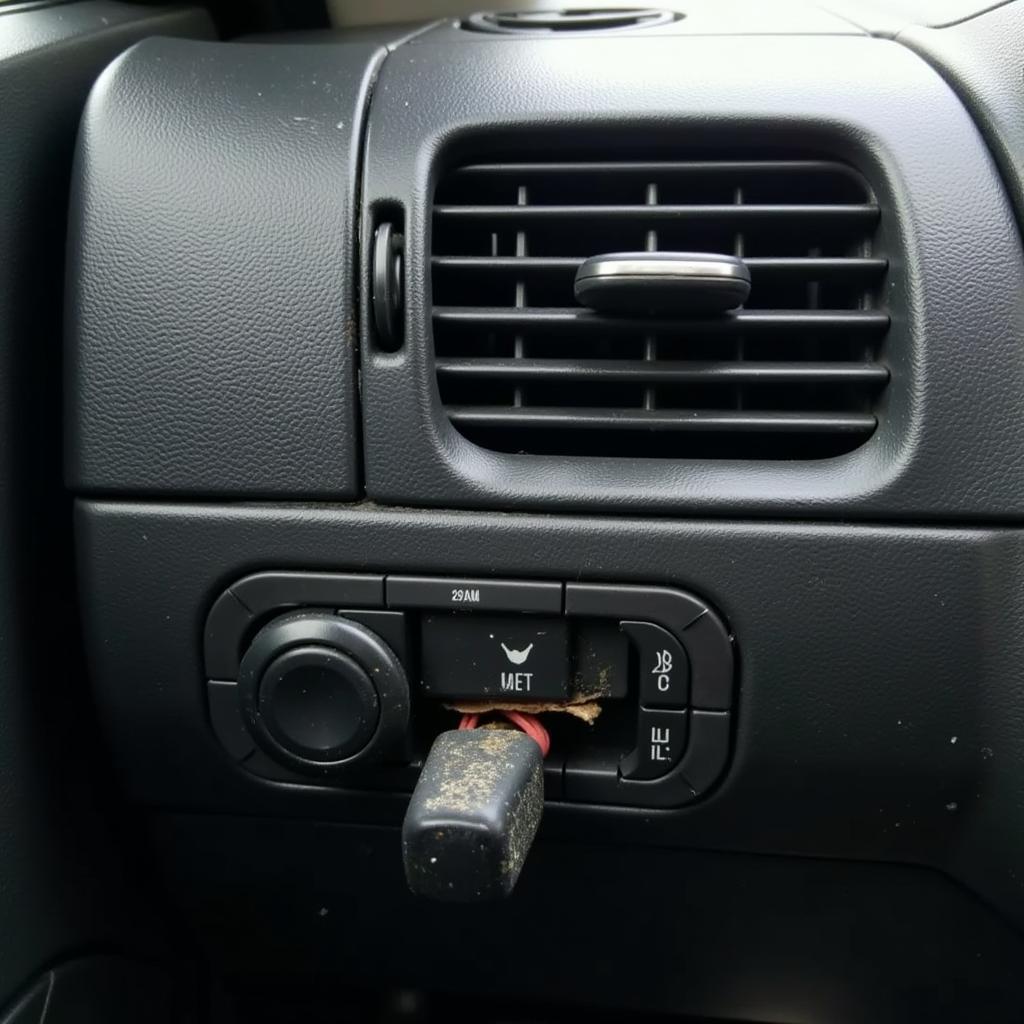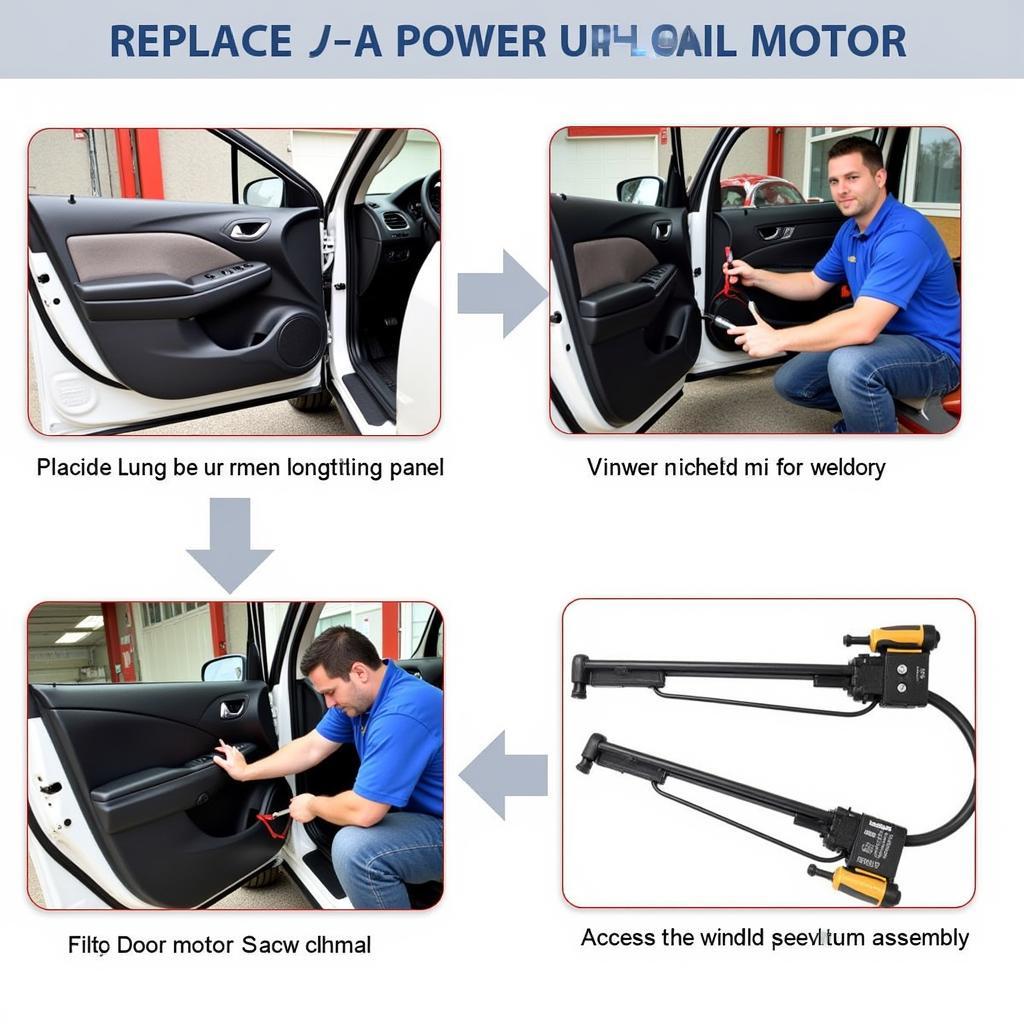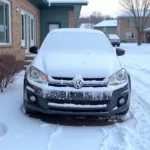Electric power windows are a convenient feature in modern vehicles, but when they malfunction, it can be a real hassle. Understanding how to diagnose and potentially fix the issue yourself can save you time and money. This guide provides a comprehensive approach to troubleshooting and repairing electric power windows in cars.
Identifying the Problem: Where to Start with Power Window Repair
Before diving into repairs, it’s crucial to pinpoint the exact problem. Is it just one window that’s not working, or are all of them affected? Does the window make any noise when you try to operate it? These initial observations will help you narrow down the potential causes. Is it a slow roll-up, a complete failure to move, or perhaps a strange grinding sound? Accurately identifying the symptoms will significantly aid in the diagnostic process.
If only one window is malfunctioning, the problem is likely isolated to that specific window’s mechanism. If all the windows are affected, the issue might be with the master power window switch, a blown fuse, or a wiring problem.
Common Causes of Electric Power Window Failures
Several factors can contribute to power window problems. Here are some of the most common culprits:
- Faulty Window Switch: The switch itself can wear out or become damaged over time, preventing the window from operating.
- Broken Window Regulator: The window regulator is the mechanism that moves the window up and down. A broken cable or a worn-out motor in the regulator is a frequent cause of window malfunctions.
- Blown Fuse: A blown fuse can interrupt the power supply to the window motor. This is an easy fix and is often the first thing to check.
- Wiring Issues: Damaged or corroded wiring can prevent the signal from reaching the window motor.
- Motor Failure: The window motor itself can fail, preventing the window from moving.
 Faulty Power Window Switch in a Car
Faulty Power Window Switch in a Car
Troubleshooting Electric Power Windows: A Step-by-Step Guide
-
Check the Fuse: Locate the fuse box (usually under the dashboard or in the engine compartment) and identify the fuse associated with the power windows. Check if the fuse is blown and replace it if necessary.
-
Test the Window Switch: Use a multimeter to test the switch for continuity. If the switch is faulty, replace it.
-
Inspect the Window Regulator: Access the window regulator (usually behind the door panel) and check for any visible damage, such as broken cables or a malfunctioning motor.
-
Check the Wiring: Inspect the wiring connecting the switch, motor, and power source for any damage or corrosion. Repair or replace any damaged wires.
-
Test the Window Motor: If all other components check out, the motor itself might be faulty. Use a multimeter to test the motor for continuity. Replace the motor if necessary.
Replacing a Power Window Motor: Tips and Tricks
Replacing a power window motor often involves removing the door panel and accessing the window regulator assembly. This can sometimes be a tricky process, so be sure to have the correct tools and refer to your car’s service manual for specific instructions.
 Replacing a Car's Power Window Motor
Replacing a Car's Power Window Motor
Expert Insights on Power Window Repair
“Many people overlook the simple fix of checking the fuse first,” says automotive expert, Michael Stevenson. “It’s a quick and easy step that can save you a lot of time and hassle.”
Preventing Future Power Window Problems
Regular maintenance can help prevent future power window issues. Keeping the window tracks clean and lubricated can prevent binding and extend the life of the regulator.
 Lubricating Car Window Tracks for Smooth Operation
Lubricating Car Window Tracks for Smooth Operation
Conclusion: Keeping Your Power Windows Rolling Smoothly
By following these troubleshooting and repair tips, you can effectively address most electric power window problems in cars. Remember to always prioritize safety and consult a professional if you are unsure about any step of the process. Regular maintenance and prompt attention to any emerging issues will keep your power windows functioning smoothly for years to come. Don’t forget to check the how to repair water drown car article for related car repair information.
FAQ
-
How much does it cost to repair a power window? The cost can vary depending on the specific problem and the make and model of your car.
-
How long does it take to repair a power window? The repair time can range from a few minutes to a few hours, depending on the complexity of the problem.
-
Can I repair a power window myself? Yes, with the right tools and knowledge, you can often repair a power window yourself.
-
What are the signs of a failing power window motor? Slow operation, grinding noises, and complete failure to move are common signs of a failing motor.
-
How often should I lubricate my power window tracks? It’s a good idea to lubricate the tracks every few months or as needed.
-
How can I prevent my power windows from getting stuck? Regular cleaning and lubrication can help prevent sticking.
-
What should I do if my power window falls off track? If your window falls off track, it’s best to consult a professional mechanic.
Common Power Window Problems Scenarios
- Window stuck halfway: This can be caused by a faulty regulator, a jammed window, or a problem with the motor.
- Window making grinding noise: A grinding noise usually indicates a problem with the regulator, specifically worn-out gears or cables.
- Window slow to roll up or down: This could be due to a weak motor, a binding regulator, or dirty window tracks.
Related Articles and Further Assistance
For further guidance on car repairs, you may find these resources helpful: How to repair water drown car
Need help with your car repair? Contact us via WhatsApp: +1(641)206-8880, Email: [email protected]. Our customer service team is available 24/7.


